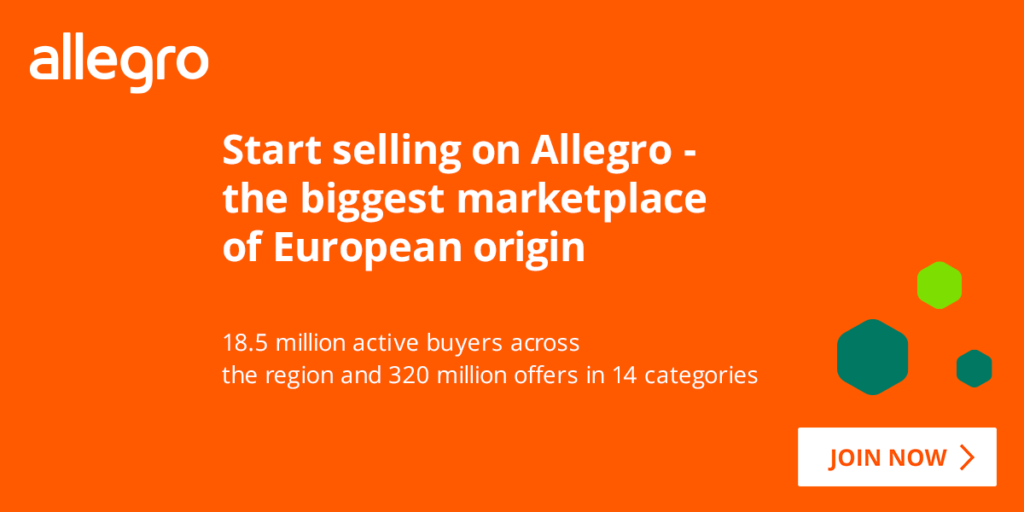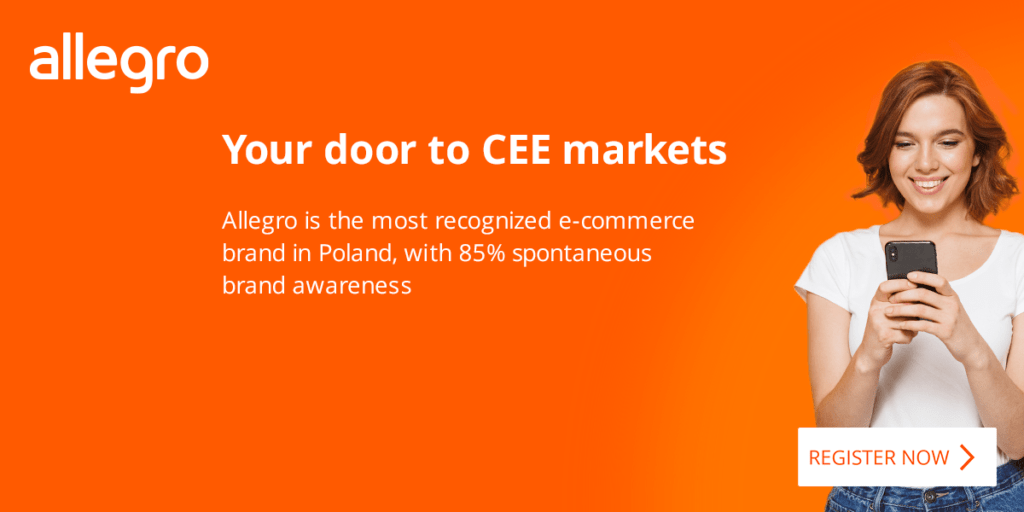The Anatomy of The Central and Eastern European (CEE) E-commerce Customer
Written by
Kinga EdwardsPublished on

Looking at the Central and Eastern European market for your next big e-commerce venture?
Or, perhaps you’re already operating in the region but want to increase your sales?
Either way, you’re in the right place.
The CEE market is filled with opportunities, but it also comes with its unique set of challenges and customer behaviors.
Our comprehensive guide will shed light on CEE e-commerce customers. We’ll explore what makes them tick, what turns them off, and most importantly, how you can tailor your strategies to meet their specific needs.
Ready to find out?
General Information about the CEE E-commerce Market
If you’re considering tapping into the e-commerce market in Central and Eastern Europe (CEE), you’re onto something big. This region is experiencing rapid growth in online sales, outpacing many Western European nations. Here’s what you need to know.
Firstly, digitalization is soaring in the CEE region, making online shopping increasingly popular. Consumers here are enjoying the benefits of a wide range of products, secure online payments, and the convenience of home delivery. Cross-border shopping is also a significant trend, especially for products that aren’t locally available or are cheaper abroad.
In terms of online shopping adoption, Slovakia is leading, with 85% of its population making online purchases. This rate is 10 percentage points higher than the EU average.
Other countries like Czechia, Hungary, and Estonia are also above the EU average, making them significant markets in the CEE region. Poland’s e-commerce market has a value of close to 28 billion dollars. That’s not something to neglect!
Czechia has the highest e-commerce share in its retail sector, accounting for 14% of the total retail market. Slovakia follows closely with a 12% share.
As for growth, Ukraine and Estonia have shown remarkable increases, with growth rates of 27% and 25%, respectively. These figures indicate that these markets are ripe for investment.
So, now you know that it’s worth tackling the CEE market. But how to do it? Start by understanding the CEE online customer.

What Makes CEE Customers Take Action
#1 They’re Value-Conscious Shoppers
CEE customers are known for being value-conscious. According to a McKinsey report, CEE is a price-conscious market where smart shoppers are finding ways to stretch their budgets without sacrificing quality. Offering value-added services or products can be a differentiator in attracting these consumers, no matter the country.
#2 They Have High Expectations for Customer Service
Webinterpret notes that the CEE region places a high value on customer service, making it essential for businesses to focus on this aspect. Providing excellent customer service can set you apart from competitors. One way to do that? Speak their language — literally. Offering customer service in the local language can make a world of difference. It makes people feel more at ease and shows that you’re tuned into their needs.
#3 They Have a Preference for Local Payment Methods
When it comes to paying for online purchases, people in Central and Eastern Europe have their own favorites. According to a Property Forum article, offering local payment options can really help boost your sales.
Card payments are quite popular in some countries like Slovakia and Latvia. However, in Bulgaria, people still prefer to pay with cash more often than with cards. While, in Poland, it’s enough to whisper BLIK to make customers tick.
This shows that understanding local payment preferences is super important if you want to succeed in this market.
So, what does this mean for your business? Well, if you’re selling online in these countries, you might want to offer more than just the standard credit card option. Think about adding local payment methods that people actually use and trust. This could be a game-changer in converting browsers into buyers.
Tuning into these local preferences, you’re not just making it easier for people to buy from you — you’re also building trust. And in the world of e-commerce, that’s worth its weight in gold.
#4 They Are Avid Mobile Users
Mobile shopping is on the rise in Central and Eastern Europe, with data traffic expected to grow five-fold by 2026.
To leverage this, consider developing native apps for iOS and Android and using targeted ad campaigns. Analytics are key, so work with third-party partners to measure ad effectiveness. Quality ads make a big difference, accounting for about 70% of your advertising success.
#5 They Have Diverse Languages and Cultures
The Central and Eastern Europe region is a melting pot of languages and cultures, making localization crucial. For instance, in Poland, consumers appreciate detailed product descriptions and a strong focus on quality. In Slovakia, quick and efficient customer service, especially in the local language, can set you apart. Localizing your product listings and customer service can go a long way in appealing to this diverse customer base.
#6 They Expect Fast and Reliable Delivery
In the CEE region, a well-developed delivery infrastructure means customers expect their packages to arrive quickly and without hassle. According to Expandeco, customers are becoming increasingly impatient and price-sensitive, often expecting same-day delivery. Failing to meet these high expectations can drive customers to look for alternatives.
#7 They Are Open to New Brands but Loyal Once Hooked
In the Central and Eastern Europe region, consumers are generally open to exploring new brands, for example, through marketplaces. However, once they find a brand that aligns with their needs and expectations, they tend to stick with it. This dual nature presents an opportunity for businesses to not only attract new customers but also to focus on retention strategies that facilitate long-term loyalty.
#8 They LOVE Marketplaces
When it comes to online shopping in Central and Eastern Europe, marketplaces are a big hit, and Allegro is often the first stop for many consumers.
With over 20 million registered users, Allegro is extremely popular in Poland’s e-commerce market.
According to their official site, they offer millions of listings across a wide range of categories, from electronics to fashion, in 6 markets across Europe. Allegro is a force to be reckoned with. It’s not just a shopping platform – it has become a part of daily life in Poland. The platform’s user-friendly interface and customer-centric approach have made it the go-to online marketplace for Polish consumers.
Looking to break into the CEE market? Allegro is the platform you can’t afford to ignore.
| Allegro is your new sales channel for success in Central Eastern Europe. Numbers speak for themselves – millions of active buyers across the region and 320 million offers in 14 categories. Allegro’s English-language service allows European customers and merchants to benefit from EU-wide access in 25 countries. 🔸 Create an account now and see how easy it is to get started – and start selling. |
#9 They Are Regulatory-Aware
In Central and Eastern Europe, consumers are becoming more clued-in about regulations and their rights. They’re not just looking for good deals, anywhere. Rather, they want to know that they’re shopping with a trustworthy business. Being transparent about how you both handle data and respect consumer rights is necessary for them. If you want to win over customers in this region, you’ve got to be upfront about your business practices. Establishing long-lasting relationships with CEE consumers can be made much easier with such transparency.
#10 They Are Quick to Adapt to Market Trends
The e-commerce scene in Central and Eastern Europe is buzzing, with Eastern Europe seeing a 36% growth in e-GDP and Central Europe not far behind at 28%. This is a testament to how quickly consumers in this region adapt to new trends. For businesses, this means you’ve got to be on your toes. Staying ahead of the curve isn’t just a nice-to-have – it’s a must if you want to capture the attention of this fast-moving customer base.
| 8 Key Takeaways 🔸 Value-consciousness is a defining trait of CEE consumers. 🔸 High-quality customer service is non-negotiable. 🔸 Local payment methods can significantly boost conversion rates. 🔸 The growing internet usage indicates a shift towards online shopping. 🔸 A well-educated workforce translates into discerning customers. 🔸 Go marketplaces – for selling & for buying! 🔸 Cultural diversity requires localized marketing strategies. 🔸 Regulatory awareness is increasing, making transparency crucial. |
Speak Their E-commerce Language
Understanding the Central and Eastern European e-commerce market is about more than just translating your website into different languages. It’s about truly speaking their e-commerce language. This means localizing your content to reflect not just the words, but also the cultural nuances and consumer preferences unique to each country.
From offering local payment methods and fast delivery options to understanding the importance of customer service and regulatory transparency, adapting to these preferences gets the job done.
Do so, and you’ll find yourself not just breaking the language barrier – but building a bridge to long-term customer relationships in the CEE region.

***


